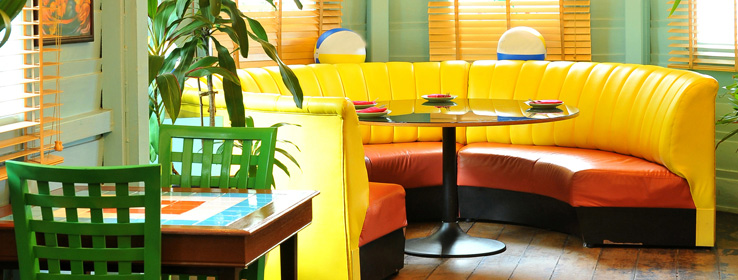Psychological and physiological studies reveal correlations between color and our emotional responses.
Colors, like features, follow the changes of the emotions. – Pablo Picasso
Hester Prynne, the heroine of Nathaniel Hawthorne's novel "The Scarlet Letter," knew the power of color. Though the "A" she wore was symbolic, its color evoked strong feelings of forbidden passion, lust and sensuality. Yale researchers have confirmed that red triggers functions of the central nervous system, invoking tension, excitement and hostility – a damning combination, no doubt, for Prynne.
Numerous psychological and physiological studies reveal correlations between color and our emotions. A 2004 study conducted by Naz Kaya and Helen H. Epps from the Department of Textiles, Merchandising and Interiors at the University of Georgia showed that, for the 98 college-aged volunteers, green evoked the highest percentage of positive emotions, such as relaxation, happiness, peace and hope, related to the color's prominence in nature.
Yellow was considered energetic and elicited such positive emotions as happiness and excitement because it was associated with the sun and summertime. The next highest number of positive responses was for blue, followed by red, purple and white.
Blue was associated with the ocean and sky, inducing feelings of relaxation and calm. Red was associated with both love and romance and evil and blood. Purple brought to mind images of children and laughing. White evoked feelings of innocence, peace and hope, reminding respondents of brides, snow, doves and cotton.
Black and gray received high negative ratings. Black evoked feelings of depression, fear and anger because it was associated with mourning and tragic events. Gray was associated with thoughts of bad weather and brought out feelings of sadness, depression and boredom.
But, says Martin Heesacker, Ph.D., chairman of the Department of Psychology at the University of Florida, most color-related feelings are highly personal – highly dependent on personal preference and one's past experience. In his 2001 article for the Journal of Counseling and Development titled "The Physical Environment and Counseling: A Review of Theory and Research," he wrote, "The likely place for understanding the importance of color is the social, cultural and the personal history of the individual."
"If I have a happy childhood, and every night I go to bed in a bright yellow room, I'm going to associate this color with good feelings when I'm an adult," says Heesacker.
Take Hester Prynne's red: Red isn't always racy or ranting; it can also be religious. Think of the Pentecostal robes of a priest, the flicker of candles in red glass at an altar, the ornate red robes of a Chinese bride. Through our exposure to them in various situations, colors of all hues can access and encourage feelings of all kinds.
Heesacker acknowledges that emotions may also be innately triggered by color. "Color is in our repertoire for a reason; it confers some sort of survival advantage. We're still searching for exactly what all the functions are with all these color perceptions," says Heesacker.







